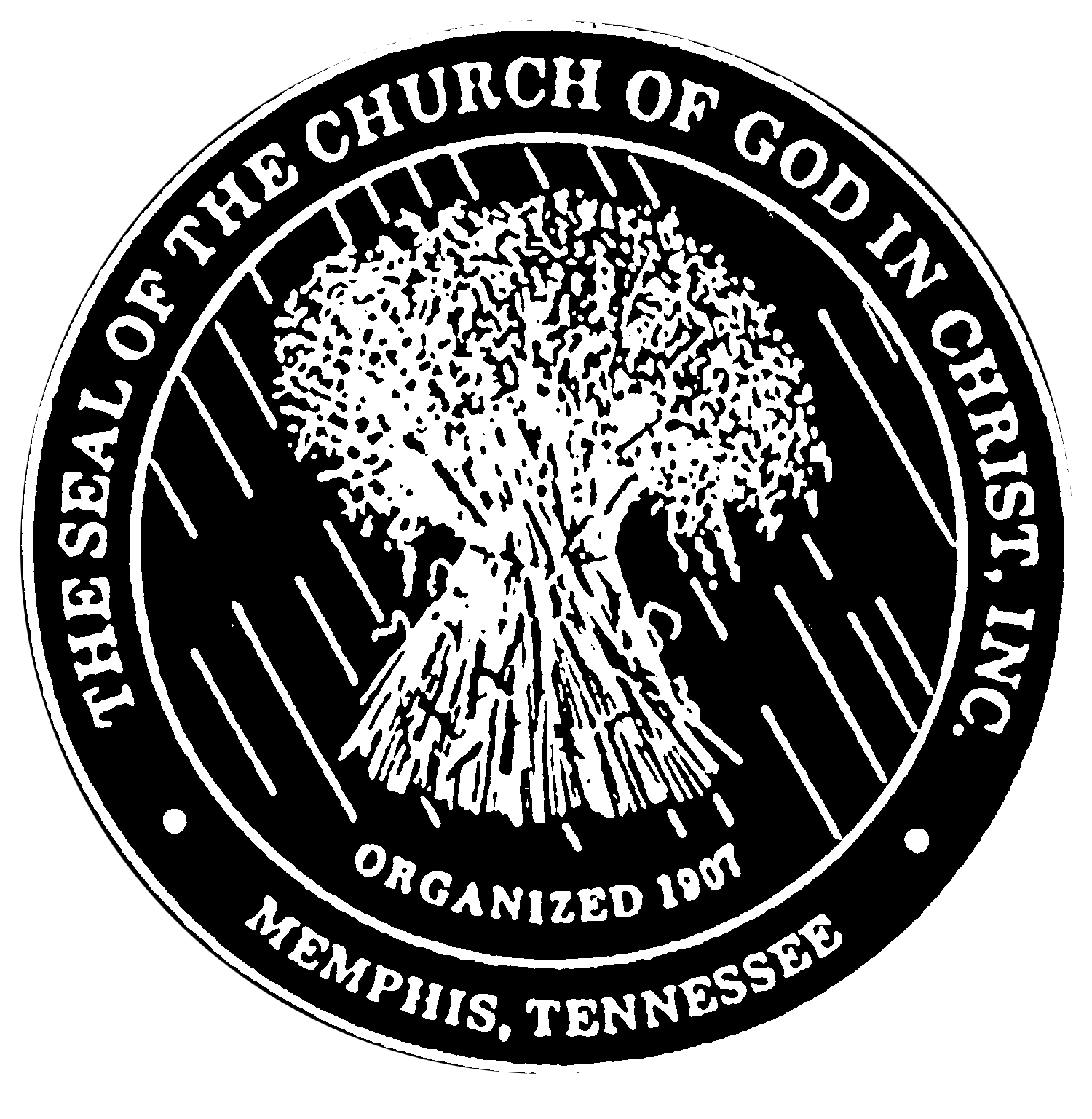The Eternal Argument: Jude Series #6

As we continue our study of the Book of Jude, without question, one of the strangest verses in the Bible is Jude 9:
But Michael the archangel, when he disputed with the devil about the body of Moses, did not dare pronounce against him a railing judgment, but said, “The Lord rebuke you!”
 Jude verse 9 refers to an event which is found nowhere else in Scripture. Michael had to struggle or dispute with Satan about the body of Moses, but what that entailed is not described. Another angelic struggle is related by Daniel, who describes an angel coming to him in a vision. This angel, named Gabriel in Daniel 8:16 and 9:21, tells Daniel that he was “resisted” by a demon called “the prince of Persia” until the archangel Michael came to his assistance (Daniel 10:13. So we learn from Daniel that angels and demons fight spiritual battles over the souls of men and nations, and that the demons resist angels and try to prevent them from doing God’s bidding. Jude tells us that Michael was sent by God to deal in some way with the body of Moses, which God Himself had buried after Moses’ death (Deuteronomy 34:5-6).
Jude verse 9 refers to an event which is found nowhere else in Scripture. Michael had to struggle or dispute with Satan about the body of Moses, but what that entailed is not described. Another angelic struggle is related by Daniel, who describes an angel coming to him in a vision. This angel, named Gabriel in Daniel 8:16 and 9:21, tells Daniel that he was “resisted” by a demon called “the prince of Persia” until the archangel Michael came to his assistance (Daniel 10:13. So we learn from Daniel that angels and demons fight spiritual battles over the souls of men and nations, and that the demons resist angels and try to prevent them from doing God’s bidding. Jude tells us that Michael was sent by God to deal in some way with the body of Moses, which God Himself had buried after Moses’ death (Deuteronomy 34:5-6).
Various theories have been put forth as to what this struggle over Moses’ body was about. One is that Satan, ever the accuser of God’s people (Revelation 12:10), may have resisted the raising of Moses to eternal life on the grounds of Moses’ sin at Meribah (Deuteronomy 32:51) and his murder of the Egyptian (Exodus 2:12).
It has also been supposed that Jude is quoting an apocryphal book that contained this account, and that Jude means to confirm that the account is true. Origen (c. 185–254), an early Christian scholar and theologian, mentions the book “The Assumption of Moses” as extant in his time, containing this very account of the contest between Michael and the devil about the body of Moses. That book, now lost, was a Jewish Greek book, and Origen supposed that this was the source of the account in Jude.
The only material question, then, is whether the story is “true.” Whatever the origin of the account, Jude does in fact seem to refer to the contest between Michael and the devil as true. He speaks of it in the same way in which he would have done if he had spoken of the death of Moses or of his smiting the rock. And who can prove that it is not true? What evidence is there that it is not? There are many allusions in the Bible to angels. We know that the archangel Michael is real; there is frequent mention of the devil; and there are numerous affirmations that both bad and good angels are employed in important transactions on the earth. As the nature of this particular dispute over Moses’ body is wholly unknown, conjecture is useless. We do not know whether there was an argument over possession of the body, burial of the body, or anything else.
Scripture is inerrant. The inerrancy of Scripture is one of the pillars of the Christian faith. As Christians, our goal is to approach Scripture reverently and prayerfully, and when we find something we do not understand, we pray harder, study more, and—if the answer still eludes us—humbly acknowledge our own limitations in the face of the perfect Word of God.
Additionally, Jude 9 is an illustration of how Christians are to deal with Satan and demons. The example of Michael refusing to pronounce a curse upon Satan should be a lesson to Christians in how to relate to demonic forces. Believers are not to address them, but rather to seek the Lord’s intervening power against them. If as powerful a being as Michael deferred to the Lord in dealing with Satan, who are we to attempt to reproach, cast out, or command demons in our own strength?
I would also like to suggest that the phrase, “but Michael the archangel, when he disputed with the devil about the body of Moses,” gives further behind the scenes insight regarding the grand story on The Mountain of Transformation in Mathew 17. I believe as we study this story you will greatly appreciate the obvious spiritual struggle of this generation and the soon return of Lord Jesus Christ.
Let’s begin in Mathew 16:27 and continue through Mathew 17:8.
“For the Son of Man is going to come in the glory of His Father with His angels; and will then recompense every man according to his deeds. Truly I say to you, there are some of those who are standing here who shall not taste death until they see the Son of Man coming in His kingdom.
And six days later Jesus took with him Peter and James and John his brother, and brought them up to a high mountain by themselves. And He was transfigured before them; and His face shone like the sun, and His garments became as white as light. And behold, Moses and Elijah appeared to them, talking with Him. And Peter answered and said to Jesus, ‘Lord, it is good for us to be here; if You wish, I will make three tabernacles here, one for You, and one for Moses, and one for Elijah.’
While he was still speaking, behold, a bright cloud overshadowed them: and behold a voice out of the cloud, which said, This is my beloved Son, in whom I am well pleased; hear ye Him. And when the disciples heard it, they fell on their face, and were sore afraid. And Jesus came and touched them, and said, Arise, and be not afraid. And when they had lifted up their eyes, they saw no man, save Jesus only.”
Matthew 16:27–28; 17:1–8, NASB
Within the record of the “Mount of Transfiguration,” we see a prophetic preview of the second coming of Jesus. The transfiguration was actually a glimpse of Glory and a foretaste of the future.
First, we need to realize that the Scriptures are inspired, but the numbers are not. In fact, there was a long period of time that the Bible had no chapter divisions. They were placed in the Bible only to make studying easier, by pointing to chapter and verse. Some were not inserted correctly and have divided subjects, which causes some confusion.
In this passage, we can see that Jesus began to talk about His second coming right before the start of Matthew chapter 17. In the two verses at the end of chapter 16, Jesus said, “Some of you who are standing here shall not taste of death till they see the Son of Man coming in His kingdom.”
Who was he speaking to? The disciples who all died? If so, was Jesus right or wrong? Well, Jesus was not wrong. When you put the pieces of the entire passage together, we can see that the transfiguration was a microcosm of the Second Coming. It was a prophetic preview. It was a foretaste of the future. It was a picture that Matthew was recording for the saints concerning the second coming of Jesus Christ. As we study deeper, there are three important lessons the transfiguration teaches us about the Second Coming.
We Need To Recognize The Period Indicated
 Notice the Duration
Notice the Duration
In Matthew 17:1, we read, “And after six days Jesus taketh Peter, James, and John his brother and bringeth them up into a high mountain apart.” The duration was “after six days.” This was nearly a week after Jesus had said that some of those that were standing there would see Him coming in His Kingdom.
The Old Testament prophets never saw what we now call the “church age.” They always saw Jesus Christ soon coming in His glory and power. They preached it like it was about to happen. In the New Testament, thee disciples also preached the soon return of Jesus.
When Peter preached to the crowd on the day of Pentecost, he first told the story from Joel. He then leaped over the church age and preached about the signs in the moon and stars and what was going to take place during the tribulation. Then he said, “This same Jesus who left here is going to come back again.”
Understand that Matthew was sharing about the second coming of Jesus. If it was soon to them then, it is definitely soon to us now!
Notice the Division
Peter, James, and John were with Jesus. The rest of the disciples, and many other people, were also there on that occasion but did not go with Jesus to the mount. They heard Jesus say that “some would not pass away before He would come in His glory and kingdom.” Although many today are in the work of the Lord or may be faithful to attend the house of the Lord, some are still not ready for His return. There was a division then, and there will be a division as to who is ready when Jesus comes in His glory.
Notice the Departure
The Bible says that “He took them up into a high mountain.” When Jesus does come back in His glory, there is going to be a rapture, a departure. Some church workers will be left behind. Some will be “tares” while others are “wheat,” to use the imagery that Jesus used. The tares will be left behind. We have to be genuinely ready for the coming of Jesus if we are going to go with Him when He returns!
Jesus was sharing with all of the people that day about how soon He would come and that there was going to be a separation between those who are ready and those who will be left behind. Jesus’s message and prophecy are still going to come about just as He told them a long time ago. It will happen just as Matthew recorded.
Some time ago, a man was staying in a chalet in the Swiss Alps. Early one morning he heard what sounded like an earthquake. He rushed out of bed, ran to the front desk, and asked if there were something wrong, if the mountains were breaking up. He was scared. The man at the front desk explained, “Sir, we are on the west side of the mountain. As the sun comes up in the east, the snow and ice expand as they begin to warm. The expansion causes a large crushing noise. It’s not the end of the world. It’s just the beginning of a new day.”
There is coming a new day! There is coming a new glory. There is coming a time when Jesus will come back. It will not be the end of the world, but it will be a new day for those who are found faithful and ready. The Bible indicates that it will be a time of short duration. Before we realize it, Jesus will return to take us to be with Him in glory.
We Need To Realize The Persons Involved
 The Intimates
The Intimates
When Jesus comes in His glory, there are going to be people involved. Notice that Peter, James, and John are the intimates. These men were the inner circle. They received more teaching from Jesus than anybody else. Does that mean Jesus has favorites? No. But Jesus has always had some intimates. He has always had some men and women who loved Him more than others, who were always hungry and thirsty for more.
Our goal is to be one of the intimates, to have an intimate relationship with Jesus. We want Him to be able to communicate with us and to be ready and able to respond to Him. We want to know His voice. We study books like this one in order to understand His Word. Peter, James, and John were intimates, not favorites. We, too, want to be intimate and ready for Jesus to return. Peter, James, and John were intimates, not favorites. Although many today are in the work of the Lord…still some are not ready for His return.
The Participants
We read in verse three, “And behold, there appeared unto them Moses and Elijah talking with Him.” That’s very interesting. Peter, James ,and John symbolized those who perceived the coming of Jesus, but Moses and Elijah symbolized those who will be participating in the coming of Jesus.
Moses died, but Elijah never did. Moses and Elijah are a picture of the Second Coming because they represent the resurrected and the raptured crowds when Jesus returns.
Countless articles and commentaries have address Moses and Elijah in the context of the Law and Prophets. Moses represents the law and Elijah the prophets. Yet, the context of the transfiguration is one of the Second Coming; not one of the law and the prophets.
Additionally, when we look carefully at the transformation account, we note all of the participants. The heavenly Father is present, because He says, “Behold my Son, whom I am well pleased.” The Holy Spirit is there because He is everywhere. Our text mentions “the cloud.” In prophetic passages regarding the coming of Christ, when the clouds are mentioned, the angels are not mentioned and when the angels are mentioned the clouds are not mentions. Thus, the clouds and the angels are the same.
Paul wrote in 1 Corinthians 15:51, “Behold, I show you a mystery. We shall not all sleep, but we shall be changed. The dead shall be raised incorruptible and we which are alive shall be changed. O, Death, where is thy sting? O, grave, where is thy victory?”
When Moses was coming out of the grave to appear on the mount of transfiguration, the devil contended or disputed for the body of Moses. The devil was doing all he could in his power to stop Moses’ resurrection. Yet, the Archangel Michael said to the devil, “The Lord rebuke you.”
Mathew in his account of the Transformation story, does not indicate or imply that Elijah and Moses were a vision. Everything in the story was literal. The heavenly Father, Jesus, Peter, James, John and the cloud were actual and thus was Moses and Elijah. For this to happen, Moses had to literally rise from the grave.
Furthermore, it is important to note that the archangel will participate when Christ returns for the resurrected and raptured crowds. We read in 1 Thessalonians 4:16, “The Lord will descend from heaven with a shout and with the voice of the archangel…”
Each time Jesus shouted, resurrection was the result. When Jesus walked into a cemetery and shouted, “Lazarus come out!,” Lazarus came out of the grave. The next time Jesus shouted, He was hanging on the cross and shouted, “It is finished!” In Mathew 27:51-55, we read that people rose from the dead and walked back into Jerusalem. The last time Jesus will shout, He will not be walking through a cemetery or hanging on a cross. He will descend from heaven with a shout and graves around the world will open and the sea will give up their dead.
After we are resurrected or raptured, we will be caught up together “in the clouds.” Remember, the clouds and angels are the same. Then, with the angels surrounding us, the Lord will be our mighty, heavenly royal escort into heaven. All of the demons that stroll through this earth will no doubt do their best to stop this glorious day of resurrection and rapture, but the archangel and the angels will win the war.
Charles Haddon Spurgeon used to say, “I hope I die before Jesus comes again. Because, on the day that He returns, I want to come out of that grave and look back and say, ‘O, grave, where is your victory.’”
We, too, have something to sing and shout about. We don’t need to doubt, pout, moan, or groan. Jesus is coming back in all His power and glory for those who are ready for His return.
Moses and Elijah are a picture of the Second Coming because they represent the resurrected and the raptured crowds when Jesus returns.
The Magnificent
We read in verse 8, “And when they had lifted up their eyes, they saw no man save Jesus only.” The Second Coming is not about some pet prophesy, program, or plan—it’s about a Person. The Second Coming does not center on you and me. It centers on Jesus.
The Bible notes that while they were on this mountain that Jesus’s appearance was changed. His face was changed, and He was transfigured. The word transfigured comes from the word metamorpho from which we get metamorphosis. It’s the change that takes place outwardly. Jesus is going to change us, and we are going to be with Him forever. To be with Him, our bodies will also change as we have studied before. When Jesus comes in His glory, our physical bodies are going to take on a supernatural body and be like His body. It will be an eternal body. It will be a victorious body “over death, hell, and the grave.”
Jesus’s appearance is changed, and His apparel is changed. We read in the Word, “His raiment was as white as light.” Our clothing, too, is going to be changed. It will be eternal clothing. This corruptible will put on the incorruptible, and we will live forever in the power and glory of Jesus Christ.
We Must Respond To The Programs For The Interval
 We can comprehend the persons involved and the period indicated, but to see the significance of the Second Coming in the passage from Matthew 17, we need to understand the program for the interval.
We can comprehend the persons involved and the period indicated, but to see the significance of the Second Coming in the passage from Matthew 17, we need to understand the program for the interval.
Peter’s Attitude
What are we supposed to be doing until Jesus returns? What is the program for this interval we are living in? What is the church to be doing until Jesus Christ comes back?
In verse 4 we read, “Peter answered and said unto Jesus, Lord, it is good for us to be here. If thou wilt, let us make here three tabernacles—one for thee, one for Moses and one for Elijah.”
Some of us have the same attitude as Peter. He wanted to go into a building program and stay on the mountain top with Jesus. He was not interested in leaving the mountain and going back to the valley. Many of us also want to stay on the mountain and not return to the valley. We can easily get focused on having one spiritual high after another. We enjoy supernatural experiences, but we do not want to take them to the valley where we can be useful for God. Jesus does not just do supernatural things in our lives to keep us on top of the mountain. He wants us to return to the valley where hurting people are found.
Like Peter, there are many who want to build newer, bigger buildings instead of elevating evangelism. The Second Coming is not only for the church to get ready but also for the church to get others ready. It was not taught just to shock people but also to save people. The Second Coming was given for you and me to understand that we need to be in the valley telling others about Jesus.
Often in church history, we can see those who professed Christ who turned inward and forgot about the outward needs. But we will never appreciate the mountain top until we return to the valley where real life is lived, And we will have a difficult time in the valley unless we have been on the mountain.
The Savior’s Action
The Second Coming was given to stir us to get others to the mountain. Look at the Savior’s action recorded in verse 14, “And when they were come to the multitude…”
They went from the mountain top directly to the multitude below. The passage continues, “There came to him a certain man kneeling down to him and saying, Lord, have mercy on my son, for he is a lunatic and sore vexed, for oftentimes he falleth into the fire and into the water.”
While Jesus had been on the mountain with Peter, James, John, Moses, and Elijah, a father had brought his demon-possessed boy to the other disciples to have the demons cast out. They failed. Jesus said to them, “O ye of little faith…” He then taught them concerning faith in God and then cast out the demons and healed the boy.
If Jesus had stayed on the mountain, that boy would never have been healed. If Peter, James, and John had stayed on the mountain, they would never have seen that Jesus could heal the boy.
Jesus Christ came from the mountain to the multitude. He came from the mountain to the man. He came from victory to the valley. He came from the transfiguration to the tragedy. He left the holy place to go to a hopeless place. He left blessedness to go to brokenness. He left the netherworld for the needy world. He left the place of glory, where people were shining, to the place of gloom, where people were suffering.
It is a lazy Christianity when people are encouraged to stay on the mountain with Jesus but not take Jesus down to the valley. Jesus did not like that attitude then and He does not like it now. The Second Coming is not only to show us that Jesus is going to return but that we should minister to those in need and take as many with us as we each can.
The Scripture’s Authority
There were actually two mountains that day. In Matthew 17:20–21, Jesus said, “If ye have faith as a grain of mustard seed, ye shall say unto this mountain, Remove hence to yonder place; and it shall remove: and nothing shall be impossible unto you. Howbeit this kind goest not out but by prayer and fasting.” Jesus pointed out that there was a mountain of transfiguration but there also was a mountain of tragedy. People are hurting, dying, needing deliverance, and needing Jesus Christ to walk right into their lives. If we stay on the one mountain, we will not be able to deliver people from their suffering on the other mountain.
Jesus taught us that if we had faith in Him, we would be able to move those kinds of mountains. We would have to leave the mountain of transfiguration and go to the mountains of tragedy to help people and bring them to Christ.
Do we really care about the needs of people who do not know the Lord? Many hurting people are going to miss the Second Coming unless we intervene. The only way we can take them to the mountain is to go to the valley. We need to become intimate with Jesus and take Him with us to the valley in order to see lives changed, corrected, consecrated, committed, and made ready for the second coming of Jesus Christ.
Does it matter whether those people stay in the valley or whether they make it to the mountaintop with Jesus? Jesus came the first time and He died so we could leave the mountain and go to the valley. That’s what Christianity is all about—living victoriously and delivering others who are hurting and need Jesus in their lives. If Jesus were to come today, they would be left behind. We need to leave the mountain and go to the valley to get them ready for the coming of Jesus.
We must leave the mountain of transfiguration and go to the mountains of tragedy to help people and bring them to Christ. Many hurting people are going to miss the Second Coming unless we take them to the mountain.
In the last century, the famed Titanic set sail from England to America. The builders had said the Titanic was an unsinkable ship. In reality, sinking was the only thing it ever did. It made its way into treacherous waters. The captain was told there were dangerous icebergs along the way and that he should be careful. He read the note, folded it, put it away, and said: “Sail on.” They sailed on, and you know the story. They hit an iceberg and over 1,500 people died that night as a result.
There were people in the first, second, and third class sections of that ship. Some were “up and inners” while others were “down and outers.” Some were very poor while others were very rich. There were people on board from all facets of society and many countries of the world.
But, when the news arrived in New York that the Titanic had sunk, there were no longer many classes of people listed, only the saved and the lost.
Today, there are still only two classes of two people in the world: those who are saved and those who are lost. When Jesus returns, those who are lost will be left behind. Those who are saved will be caught up with Him into glory. The only way the lost can be saved is for you and me to go to the valley and get their dirt and blood on our clothes and take them to the mountain.
Jesus can come at any time. He said, “When you think not, so shall the Son of Man return” (Matt 24:44). If we really believe that Jesus could come at any moment, we will not stay on the mountain top very long. We will do everything we can to get them ready for the second coming of Jesus.
What made the New Testament church so different was that they lived every day as though it would be the last day before Jesus would return. Matthew was trying to show the church something concerning the second coming of Jesus. We’ve seen the period indicated.
Jesus wants us to leave the mountain and go to the man, meet his needs, and get him ready for Christ’s return. He wants to use you and me to meet the needs of others. He wants us to leave the mountain, go to the valley, and save the people by the power of Jesus Christ!
Today, there are still only two classes of two people in the world: those who are saved and those who are lost!



























